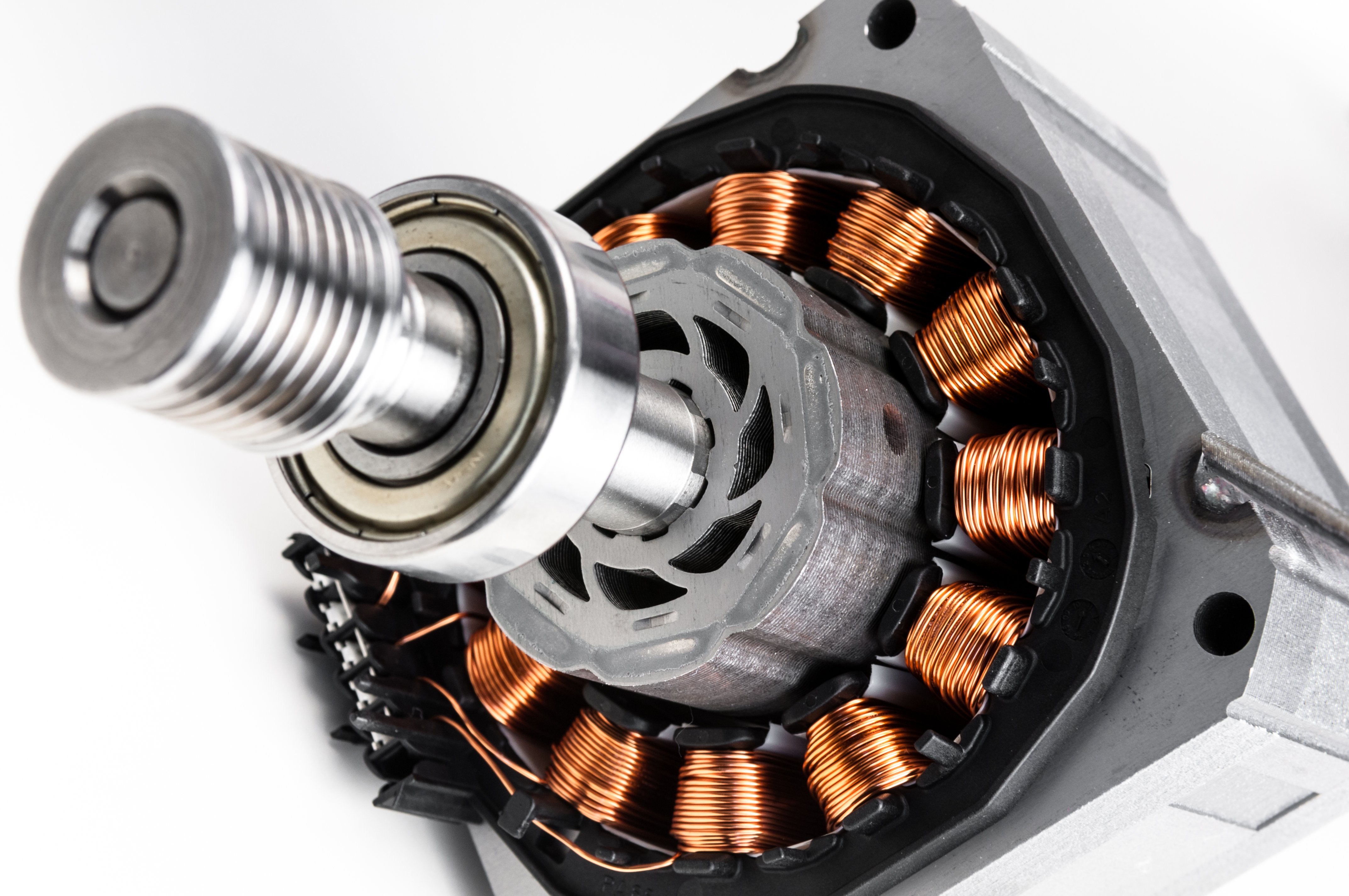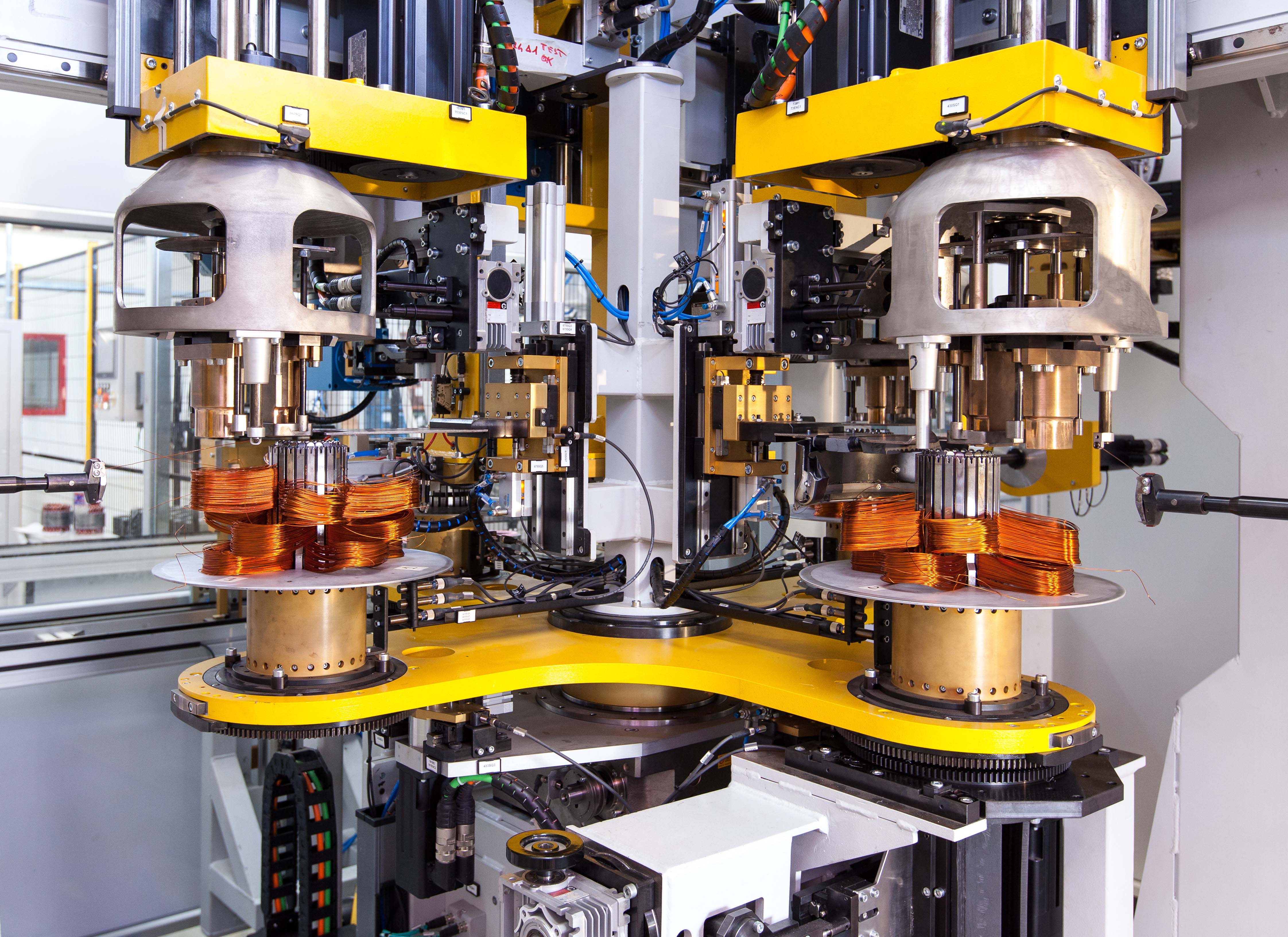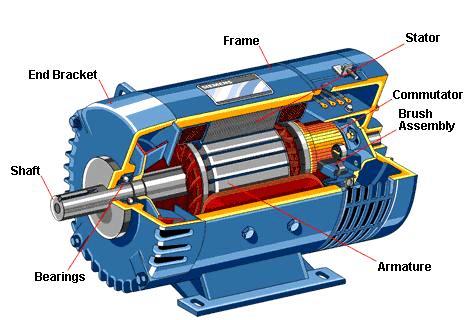Understanding the Role of Materials in Electric Motor Performance
The selection of materials for electric motor components is a critical aspect of electric motor design and manufacturing. The properties of materials used in electric motors, such as magnets, windings, and bearings, have a significant impact on motor efficiency, reliability, and cost. Electric motor materials and manufacturing processes must be carefully chosen to ensure optimal performance, minimize energy consumption, and reduce maintenance costs.
Magnets, for example, are a crucial component of electric motors, and their material properties can greatly affect motor efficiency. The choice of magnet material depends on the specific application, with factors such as temperature, corrosion resistance, and cost influencing the decision. Similarly, winding materials, such as copper and aluminum, must be selected based on their electrical conductivity, thermal resistance, and mechanical strength.
Bearing materials also play a vital role in electric motor performance, as they affect motor reliability, noise, and vibration. The choice of bearing material depends on the operating conditions, including temperature, speed, and load. Steel, ceramic, and hybrid bearings are common options, each with its advantages and disadvantages.
In addition to material selection, electric motor manufacturing processes also impact motor performance. Techniques such as injection molding, 3D printing, and machining must be carefully chosen to ensure precise control over material properties and geometric tolerances. The manufacturing process can also affect the motor’s efficiency, reliability, and cost.
Furthermore, the integration of electric motor materials and manufacturing processes can lead to innovative solutions that enhance motor performance. For instance, the use of advanced materials, such as graphene and nanomaterials, can improve motor efficiency and reduce energy consumption. Similarly, the application of digitalization and additive manufacturing can optimize motor design and manufacturing, leading to improved performance and reduced costs.
In conclusion, the selection of materials and manufacturing processes is critical to electric motor performance. By understanding the role of materials in electric motor design and manufacturing, engineers and manufacturers can create innovative solutions that enhance motor efficiency, reliability, and cost-effectiveness. The optimal selection of electric motor materials and manufacturing processes can lead to improved performance, reduced energy consumption, and increased competitiveness in the market.
How to Choose the Optimal Magnet Material for Your Electric Motor
When it comes to selecting a magnet material for an electric motor, there are several options to consider. Neodymium (NdFeB), ferrite, and samarium-cobalt (SmCo) are three of the most common magnet materials used in electric motors. Each material has its own unique properties, advantages, and disadvantages, making it essential to choose the right material for the specific application.
Neodymium magnets are known for their high energy density, making them a popular choice for electric motors. They offer high magnetic strength, corrosion resistance, and a wide range of operating temperatures. However, they can be expensive and may require additional processing steps to achieve the desired magnetic properties.
Ferrite magnets, on the other hand, are a more cost-effective option. They offer good magnetic properties, are corrosion-resistant, and can operate at high temperatures. However, they have lower energy density compared to neodymium magnets and may not be suitable for high-performance applications.
Samarium-cobalt magnets offer a balance between magnetic properties and cost. They have high energy density, corrosion resistance, and can operate at high temperatures. However, they can be more expensive than ferrite magnets and may require additional processing steps.
When selecting a magnet material, it’s essential to consider the specific requirements of the application. Factors such as operating temperature, corrosion resistance, and magnetic strength must be taken into account. Additionally, the cost and availability of the material should also be considered.
In electric motor materials and manufacturing, the choice of magnet material can significantly impact the motor’s performance, efficiency, and reliability. By selecting the optimal magnet material, manufacturers can create high-performance electric motors that meet the demands of various applications.
For example, in the automotive industry, electric motors are used in a variety of applications, including electric vehicles, hybrid vehicles, and start-stop systems. In these applications, high-performance magnets are required to ensure efficient and reliable operation. By selecting the right magnet material, manufacturers can create electric motors that meet the demands of these applications and provide a competitive edge in the market.
The Impact of Winding Materials on Electric Motor Efficiency
Winding materials play a crucial role in the efficiency of electric motors. The choice of winding material can significantly impact the motor’s performance, weight, and cost. In electric motor materials and manufacturing, the selection of winding materials is critical to achieving optimal motor efficiency.
Copper is a traditional and widely used winding material in electric motors. It offers high electrical conductivity, making it an excellent choice for high-efficiency motors. However, copper is a dense material, which can increase the motor’s weight and cost. Additionally, copper can be prone to oxidation, which can affect its electrical conductivity over time.
Aluminum is another common winding material used in electric motors. It is lighter and less expensive than copper, making it an attractive option for applications where weight and cost are critical. However, aluminum has lower electrical conductivity than copper, which can affect the motor’s efficiency.
Advanced materials like graphene are also being explored for use in electric motor windings. Graphene offers exceptional electrical conductivity, making it a promising material for high-efficiency motors. Additionally, graphene is lightweight and corrosion-resistant, which can improve the motor’s overall performance and reliability.
The properties of winding materials can significantly impact the motor’s efficiency. For example, the electrical conductivity of the winding material can affect the motor’s ability to convert electrical energy into mechanical energy. The thermal conductivity of the winding material can also impact the motor’s ability to dissipate heat, which can affect its overall performance and reliability.
In electric motor materials and manufacturing, the selection of winding materials is critical to achieving optimal motor efficiency. By understanding the properties of different winding materials, manufacturers can create high-performance electric motors that meet the demands of various applications. For example, in the automotive industry, electric motors are used in a variety of applications, including electric vehicles, hybrid vehicles, and start-stop systems. In these applications, high-efficiency motors are required to ensure optimal performance and minimize energy consumption.
By selecting the optimal winding material, manufacturers can create electric motors that meet the demands of these applications and provide a competitive edge in the market. Additionally, the use of advanced materials like graphene can provide opportunities for innovation and differentiation in the market.
Bearing Materials and Their Effect on Electric Motor Reliability
Bearing materials play a crucial role in the reliability of electric motors. The choice of bearing material can significantly impact the motor’s performance, noise, and vibration. In electric motor materials and manufacturing, the selection of bearing materials is critical to achieving optimal motor reliability.
Steel bearings are a traditional and widely used option in electric motors. They offer high strength, durability, and resistance to corrosion. However, steel bearings can be prone to wear and tear, which can affect the motor’s performance and reliability over time.
Ceramic bearings are another option used in electric motors. They offer high corrosion resistance, low friction, and high temperature stability. However, ceramic bearings can be brittle and prone to cracking, which can affect the motor’s reliability.
Hybrid bearings, which combine steel and ceramic materials, are also used in electric motors. They offer a balance of strength, durability, and corrosion resistance. Hybrid bearings are often used in high-performance applications where reliability and efficiency are critical.
The properties of bearing materials can significantly impact the motor’s reliability. For example, the friction coefficient of the bearing material can affect the motor’s efficiency and performance. The corrosion resistance of the bearing material can also impact the motor’s reliability and lifespan.
In electric motor materials and manufacturing, the selection of bearing materials is critical to achieving optimal motor reliability. By understanding the properties of different bearing materials, manufacturers can create high-performance electric motors that meet the demands of various applications. For example, in the aerospace industry, electric motors are used in a variety of applications, including aircraft and spacecraft. In these applications, high-reliability motors are required to ensure optimal performance and safety.
By selecting the optimal bearing material, manufacturers can create electric motors that meet the demands of these applications and provide a competitive edge in the market. Additionally, the use of advanced materials and technologies, such as ceramic and hybrid bearings, can provide opportunities for innovation and differentiation in the market.
Manufacturing Techniques for Electric Motor Production
Electric motor manufacturing involves various techniques to produce high-quality motors. The choice of manufacturing technique depends on the motor design, material selection, and production volume. In electric motor materials and manufacturing, the selection of manufacturing techniques is critical to achieving optimal motor performance, reliability, and cost.
Injection molding is a common manufacturing technique used in electric motor production. It involves injecting molten plastic into a mold to create the motor housing, bearings, and other components. Injection molding offers high precision, speed, and cost-effectiveness, making it suitable for high-volume production.
3D printing is another manufacturing technique used in electric motor production. It involves creating the motor components layer by layer using a 3D printer. 3D printing offers high flexibility, precision, and speed, making it suitable for low-volume production and prototyping.
Machining is a traditional manufacturing technique used in electric motor production. It involves cutting and shaping the motor components using machine tools. Machining offers high precision and flexibility, making it suitable for low-volume production and custom motor designs.
The choice of manufacturing technique affects the motor’s performance, reliability, and cost. For example, injection molding can produce high-volume motors with consistent quality, while 3D printing can produce custom motors with complex geometries. Machining can produce high-precision motors with custom designs.
In electric motor materials and manufacturing, the selection of manufacturing techniques is critical to achieving optimal motor performance, reliability, and cost. By understanding the advantages and limitations of each technique, manufacturers can create high-performance electric motors that meet the demands of various applications. For example, in the aerospace industry, electric motors are used in a variety of applications, including aircraft and spacecraft. In these applications, high-reliability motors are required to ensure optimal performance and safety.
By selecting the optimal manufacturing technique, manufacturers can create electric motors that meet the demands of these applications and provide a competitive edge in the market. Additionally, the use of advanced manufacturing techniques, such as 3D printing and machining, can provide opportunities for innovation and differentiation in the market.
Quality Control Measures in Electric Motor Manufacturing
Quality control is a critical aspect of electric motor manufacturing. It ensures that the motors produced meet the required standards of performance, reliability, and safety. In electric motor materials and manufacturing, quality control measures are essential to prevent defects, reduce waste, and improve overall efficiency.
Inspection is a key quality control measure in electric motor manufacturing. It involves visually examining the motor components and assemblies to detect any defects or irregularities. Inspection can be performed at various stages of production, including incoming material inspection, in-process inspection, and final inspection.
Testing is another important quality control measure in electric motor manufacturing. It involves evaluating the motor’s performance, efficiency, and reliability under various operating conditions. Testing can be performed using various methods, including laboratory testing, field testing, and simulation testing.
Certification is also a critical quality control measure in electric motor manufacturing. It involves obtaining certification from recognized standards organizations, such as UL (Underwriters Laboratories) or CE (Conformité Européene). Certification ensures that the motor meets the required safety and performance standards.
The implementation of quality control measures can significantly impact the motor’s performance, reliability, and safety. For example, inspection can detect defects or irregularities in the motor components, while testing can evaluate the motor’s performance under various operating conditions. Certification can ensure that the motor meets the required safety and performance standards.
In electric motor materials and manufacturing, quality control measures are essential to prevent defects, reduce waste, and improve overall efficiency. By implementing quality control measures, manufacturers can create high-performance electric motors that meet the demands of various applications. For example, in the aerospace industry, electric motors are used in a variety of applications, including aircraft and spacecraft. In these applications, high-reliability motors are required to ensure optimal performance and safety.
By implementing quality control measures, manufacturers can create electric motors that meet the demands of these applications and provide a competitive edge in the market. Additionally, the use of advanced quality control measures, such as automated inspection and testing, can provide opportunities for innovation and differentiation in the market.
Case Study: Electric Motor Materials and Manufacturing in the Automotive Industry
The automotive industry is one of the largest consumers of electric motors, with applications ranging from electric vehicles to hybrid vehicles and start-stop systems. In this case study, we will examine the challenges and opportunities in electric motor materials and manufacturing in the automotive industry.
One of the major challenges in electric motor materials and manufacturing in the automotive industry is the need for high-performance motors that can operate efficiently and reliably in a wide range of temperatures and operating conditions. To meet this challenge, manufacturers are turning to advanced materials and manufacturing techniques, such as high-temperature magnets and advanced winding materials.
Another challenge in electric motor materials and manufacturing in the automotive industry is the need for cost-effective and efficient production methods. To meet this challenge, manufacturers are turning to innovative manufacturing techniques, such as 3D printing and machining, to reduce production costs and improve efficiency.
Despite these challenges, there are also opportunities in electric motor materials and manufacturing in the automotive industry. For example, the increasing demand for electric vehicles is driving innovation in electric motor design and manufacturing, with manufacturers developing new and more efficient motor designs and materials.
In addition, the use of advanced materials and manufacturing techniques is enabling the development of more efficient and reliable electric motors, which is driving growth in the automotive industry. For example, the use of high-temperature magnets and advanced winding materials is enabling the development of more efficient and reliable electric motors for electric vehicles.
Overall, the automotive industry is a significant consumer of electric motors, and the challenges and opportunities in electric motor materials and manufacturing in this industry are driving innovation and growth. By understanding the challenges and opportunities in electric motor materials and manufacturing in the automotive industry, manufacturers can develop more efficient and reliable electric motors that meet the demands of this industry.
In electric motor materials and manufacturing, the automotive industry is a significant sector that is driving innovation and growth. By understanding the challenges and opportunities in this industry, manufacturers can develop more efficient and reliable electric motors that meet the demands of this industry. Additionally, the use of advanced materials and manufacturing techniques is enabling the development of more efficient and reliable electric motors, which is driving growth in the automotive industry.
Future Trends in Electric Motor Materials and Manufacturing
The electric motor industry is constantly evolving, with new technologies and materials emerging to improve efficiency, reliability, and cost-effectiveness. In electric motor materials and manufacturing, several trends are expected to shape the future of the industry.
Advanced materials are one of the key trends in electric motor materials and manufacturing. New materials like graphene, nanomaterials, and advanced ceramics are being developed to improve motor efficiency, reduce weight, and increase reliability. These materials offer improved thermal conductivity, electrical conductivity, and mechanical strength, making them ideal for high-performance applications.
Additive manufacturing is another trend in electric motor materials and manufacturing. This technology allows for the creation of complex geometries and structures that cannot be produced using traditional manufacturing methods. Additive manufacturing enables the production of customized motors with improved efficiency, reduced weight, and increased reliability.
Digitalization is also a key trend in electric motor materials and manufacturing. The use of digital technologies like simulation, modeling, and data analytics is becoming increasingly important in the design and development of electric motors. Digitalization enables the optimization of motor design, reduces development time, and improves product quality.
The increasing demand for electric vehicles is also driving innovation in electric motor materials and manufacturing. The development of high-performance motors for electric vehicles requires advanced materials and manufacturing techniques. This trend is expected to continue, with the global electric vehicle market projected to grow significantly in the coming years.
In electric motor materials and manufacturing, the future trends are expected to be shaped by the increasing demand for efficiency, reliability, and cost-effectiveness. The development of advanced materials, additive manufacturing, and digitalization will play a crucial role in shaping the future of the industry. By understanding these trends, manufacturers can develop innovative solutions that meet the demands of the market and stay ahead of the competition.
The future of electric motor materials and manufacturing is exciting, with new technologies and materials emerging to improve efficiency, reliability, and cost-effectiveness. By embracing these trends, manufacturers can develop innovative solutions that meet the demands of the market and stay ahead of the competition. Additionally, the increasing demand for electric vehicles is expected to drive innovation in electric motor materials and manufacturing, with the global electric vehicle market projected to grow significantly in the coming years.






